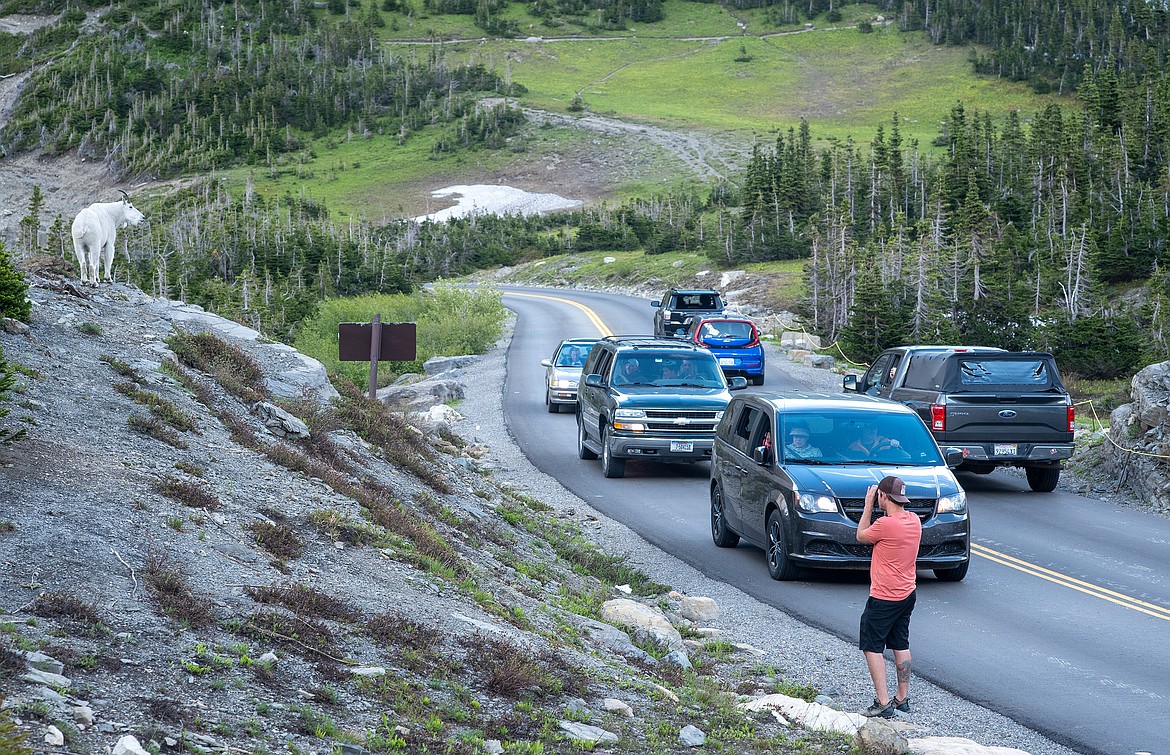Mow: Glacier Park waiting on Washington for decision on Sun Road reservation system
Glacier National Park is now awaiting a decision from the Park Service’s Washington, D.C. offices on whether it can implement a ticketed reservation system for the Going-to-the-Sun Road for the remainder of the summer, superintendent Jeff Mow said Friday.
He said he expected a decision in a “matter of days.”
Mow held a series of meetings with area business owners and chamber of commerces in the past week.
He characterized the business response as a “tepid acceptance of the idea.”
He noted that since the Going-to-the-Sun Road has opened up over Logan Pass to Rising Sun, traffic flow has improved.
“It’s been a nice week,” Mow said.
Prior to that, the park had to close down the corridor entirely on several occasions in June because parking lots were simply full from Apgar to Avalanche.
If the reservation system is implemented, it would run just five weeks, ending after Labor Day. The system would be similar to what other national parks have already implemented. It would not apply to people entering the park before 6 a.m. or after 6 p.m.
Under the proposal, tickets would be required for entry to the park at West Glacier and would be available through recreation.gov, with half being available up to 30 days in advance and the remaining tickets being released two days in advance. Tickets will allow for seven days of park entry, just as the current system. Ticketed entry will not be required for visitors traveling to the North Fork area of the park, tribal members, visitors with camping or lodging reservations, landowners and their guests, business owners, groups holding valid Commercial Use Authorizations, and those participating in park partner activities.
People could also ride bicycles or walk into the park if they wanted to. It only applies to vehicles.
But implementing the plan so late was worrisome to local businesses, Mow acknowledged.
“The most troubling thing was a lack of lead time,” he said.
Mow said the park didn’t get notice from the Blackfeet Tribe until late June that it would restrict nonessential travel through the summer season due to the coronavirus crisis. That’s when Glacier began considering the reservation system. It didn’t have time to create its own, so it used what other parks, like Yosemite, already had in place.
He also noted that projections done by state tourism officials predict that visitation to Glacier could be flat or even lowering as summer progresses.
But to be sure, Glacier, like other national parks, will continue to discuss the idea of reservations and ticketed entry with the public for future years. This year has been unique in that half of the park has been closed because of the coronavirus crisis.
But just a few years ago the park saw 1 million in the month of July alone.
“We can honestly say that was too many people in the park,” Mow said.
Even this year, with coronavirus concerns, there are places where social distancing isn’t possible — particularly at restrooms in some locations. If people practiced social distancing of 6 feet, they’d be out in the Sun Road waiting in line, or blocking the stairs at Logan Pass, Mow noted.
Complicating matters, the park has fewer staff, because seasonal employees aren’t allowed to live three or four to a dormitory like they were before the coronavirus pandemic.
In the long run, the park is hoping to come up with a plan that would allow destination travelers some assurances of being able to access and enjoy the park, as well as having locals the ability to enjoy it as well, Mow said.

